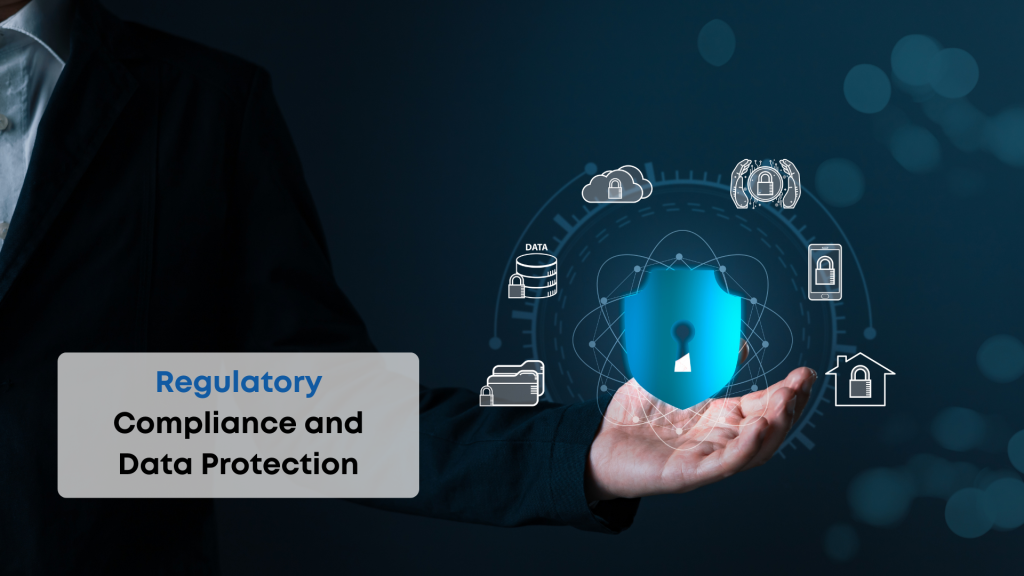The facilities manager receives an urgent call from the CFO: Thirty percent of the office spaces remain empty while the company pays premium rent downtown. Meanwhile, employees work from kitchen tables at home, claiming they’re more productive than ever. This disconnect between physical workspace utilization and actual work patterns has sparked intense debate about desk monitoring and workplace monitoring technologies that promise to bridge the gap between traditional office management and modern work realities.
The Evolution of Workplace Monitoring
Modern desk monitoring has evolved far beyond simple attendance tracking to encompass comprehensive workplace management systems that analyze desk occupancy patterns, user activities, and productivity metrics. This transformation reflects the changing nature of work itself, where hybrid work models and remote work arrangements require new approaches to understanding how and where work gets done.
Organizations today deploy sophisticated employee monitoring software that combines desk usage analytics with comprehensive employee activity monitoring to optimize both physical and digital workspaces. These systems leverage technologies ranging from Wireless Desk Occupancy Sensor hardware to advanced computer monitoring software that tracks application usage and user behavior.
Understanding Modern Monitoring Technologies
Contemporary desk monitoring encompasses multiple technological approaches designed to provide comprehensive insights into workplace utilization and employee productivity. These solutions range from passive sensors to active employee tracking system implementations.
- Wireless Desk Occupancy Sensor technology providing real-time desk usage data
- Employee activity tracker systems monitoring digital workspace engagement
- Real-time monitoring dashboard platforms aggregating physical and digital presence
- Workspace utilization analytics optimizing office layout and capacity planning
- Building Information Modelling integration for comprehensive space management
- Geolocation tracking for mobile and field-based work monitoring
Advantages of Comprehensive Desk Monitoring
Properly implemented desk monitoring in the modern workplace offers significant benefits for organizations seeking to optimize workplace efficiency and support both remote teams and office-based employees. These advantages extend beyond simple oversight to encompass strategic workplace optimization and enhanced employee performance support.
Enhanced Productivity and Performance Insights
Employee monitoring systems provide objective data that helps organizations understand actual work patterns and identify opportunities for productivity improvement. This quantitative data enables evidence-based decision making about workplace policies and resource allocation.
Key Productivity Benefits:
- Accurate productivity reports showing actual active time vs. presence
- Comprehensive performance benchmarks based on objective activity logs
- Advanced behavior analytics identifying optimization opportunities
- Real-time productivity score tracking for immediate feedback
- Detailed user activity report data supporting employee performance reviews
- Program performance analysis optimizing workflow efficiency
Operational Efficiency and Resource Optimization
Workplace monitoring enables organizations to make informed decisions about space utilization, technology investments, and staffing patterns. This optimization can result in significant cost savings and improved employee satisfaction through better resource allocation.
- Accurate desk occupancy patterns informing real estate and space planning decisions
- Comprehensive application usage tracking guiding software licensing optimization
- Advanced Time & attendance systems reducing payroll errors and administrative burden
- Detailed Websites/URLs usage analysis identifying training and efficiency opportunities
- Sophisticated program review activities supporting continuous improvement initiatives
- Strategic workspace utilization data supporting hybrid work policy development
Challenges and Concerns with Desk Monitoring

Despite potential benefits, desk monitoring implementation faces significant challenges related to employee privacy, trust, and workplace culture. Organizations must carefully balance monitoring benefits with legitimate privacy concerns and potential negative impacts on employee morale and retention.
Privacy and Trust Considerations
Employee privacy represents the most significant concern surrounding comprehensive workplace monitoring. Excessive monitoring can create a surveillance culture that undermines trust and potentially violates employee privacy protections under various jurisdictions.
Privacy-Related Challenges:
- Employee privacy violations through excessive keystroke logging and screen recording
- Trust erosion between management and employees due to surveillance perception
- Privacy concerns regarding personal websites and applications monitoring
- Potential legal issues related to employee privacy protections and consent
- Cultural resistance to perceived micromanagement and surveillance
- Employee stress and anxiety resulting from constant monitoring awareness
Implementation and Technical Challenges
Deploying comprehensive employee monitoring software across diverse technological environments presents significant technical and operational challenges. These issues can impact both system effectiveness and user adoption.
- Complex integration requirements across Windows, macOS, and Terminal/Citrix server environments
- Significant burden on IT resources for client agent program deployment and maintenance
- Performance impact on employee devices and local programs operation
- High implementation costs for comprehensive on-premise monitoring systems
- Ongoing technical assistance plans and customer support requirements
- User resistance and onboarding process challenges for monitoring applications
Security, Compliance, and Legal Considerations
Modern desk monitoring in the workplace must navigate complex regulatory compliance requirements while maintaining robust data security and protecting against various threats. Organizations must ensure their desk monitoring practices align with legal requirements and industry standards.
Regulatory Compliance and Data Protection

Comprehensive employee monitoring must comply with various regulations including GDPR, HIPAA, and other EU regulations depending on industry and geographic scope. This compliance requires careful attention to data collection, storage, and processing practices.
Compliance Requirements:
- GDPR compliance ensuring proper consent and data processing procedures
- HIPAA requirements for organizations handling electronic health records
- GDPR mode functionality restricting monitoring in European Union jurisdictions
- Comprehensive data encryption protecting sensitive monitoring information
- Secure HTTPS connection protocols for data collection and transmission
- Robust firewalls and cybersecurity measures protecting monitoring infrastructure
Security and Threat Management
Employee monitoring systems can help organizations identify and respond to various security threats, from insider threats to data breaches. However, these systems also create new security considerations that must be carefully managed.
- Insider threats detection through advanced user behavior analysis
- Data breaches prevention via comprehensive user activity tracking
- Time theft prevention through accurate Login/logout and activity monitoring
- Advanced cybersecurity threat detection using behavior analytics
- Comprehensive audit trails supporting forensic investigation capabilities
- Secure Cloud infrastructure with robust access controls and encryption
Technology Solutions and Implementation Approaches
Organizations considering desk monitoring can choose from various technological approaches and deployment models. The choice between Cloud-based solutions, on-Premises deployment, and hybrid approaches depends on specific monitoring needs, security requirements, and organizational preferences.
Platform and Deployment Options
Modern employee monitoring software offers flexible deployment options accommodating diverse organizational needs. Leading solutions like Hubstaff, Time Doctor, ActivTrak, Teramind, and Insightful provide various approaches to workplace monitoring.
Technology Platform Options:
- Cloud-based solutions offering scalability and reduced IT burden
- On-premise deployments providing maximum control and data security
- Hybrid approaches combining Cloud convenience with local data security
- Google Cloud infrastructure providing enterprise-grade reliability
- Comprehensive demo environments for solution evaluation
- Flexible monthly and quarterly licensing models
Advanced Monitoring Features and Capabilities
Contemporary employee PC monitoring software provides sophisticated features that go beyond basic activity tracking to provide comprehensive workplace insights. These capabilities support both remote computer monitoring and on-site monitoring requirements.
- Advanced screenshots and employee screenshot monitoring with privacy controls
- Comprehensive keystroke tracking and mouse clicks analysis
- Sophisticated video recording and Live Screen Monitoring Software capabilities
- Intelligent productivity monitoring with automated productivity score calculation
- Advanced website monitoring and social networks usage analysis
- Comprehensive application usage tracking across all installed applications
Specialized Solutions and Industry Applications

Different industries and use cases require specialized approaches to desk monitoring and employee activity monitoring. Solutions must adapt to specific regulatory environments, workflow patterns, and technological requirements.
Industry-Specific Monitoring Solutions
Specialized platforms like WorkTime, Monitask, Kickidler, and the Controlio platform provide industry-specific features for Modern desk monitoring in the workplace, addressing unique monitoring needs. These solutions often integrate with specialized software like CAD files management and engineering applications.
- Healthcare environments requiring HIPAA compliance and electronic health records protection
- Government state office implementations with enhanced security requirements
- Engineering and design workflows involving CAD files and specialized applications
- Financial services requiring comprehensive audit trails and compliance documentation
- Remote workforce management for distributed remote teams and remote employees
- Project-based organizations requiring detailed research and ideas activity tracking
Advanced Analytics and Reporting
Modern workplace monitoring solutions provide sophisticated analytics capabilities that transform raw activity data into actionable business intelligence. These insights support strategic decision-making and continuous program improvement.
Advanced Analytics Features:
- Comprehensive real-time dashboard with customizable productivity metrics
- Advanced histogram of violations and compliance reporting
- Sophisticated user activity report data analysis and trend identification
- Intelligent email alerts for policy violations and security incidents
- Comprehensive video evidence collection and management capabilities
- Advanced Quad splitter views for simultaneous multi-user monitoring
Implementation Best Practices and Change Management
Successful desk monitoring implementation requires careful planning, transparent communication, and attention to change management. Organizations must balance monitoring objectives with employee trust and legal compliance requirements.
Strategic Implementation Approaches

Effective workplace monitoring deployment involves comprehensive planning that addresses technical, legal, and cultural considerations. This includes developing clear policies, training programs, and ongoing support systems.
- Comprehensive internal communications plan addressing employee concerns and benefits
- Phased implementation approach starting with pilot programs and gradual expansion
- Clear policy development addressing employee privacy and monitoring boundaries
- Regular program review activities ensuring ongoing effectiveness and compliance
- Continuous training and support through dedicated technical assistance plans
- Ongoing evaluation involving NRS project team assessments and stakeholder feedback
Balancing Monitoring with Employee Rights
Organizations must navigate the complex legal landscape surrounding employee monitoring while respecting worker rights and maintaining productive workplace relationships. This balance requires ongoing attention to evolving regulations and best practices.
Best Practice Considerations:
- Transparent monitoring policies with clear employee privacy protections
- Regular assessment of legal landscape changes affecting monitoring practices
- Opt-in approaches for non-essential monitoring features and applications
- Regular employee feedback collection and policy adjustment
- Clear boundaries between work-related and personal activity monitoring
- Comprehensive training for managers on appropriate monitoring use
Why Choose Office Punch?
Office Punch represents the evolution of Modern desk monitoring in the workplace, providing comprehensive desk monitoring capabilities while prioritizing employee privacy and trust. Our platform combines advanced productivity monitoring with robust employee privacy protections, ensuring organizations can optimize workspace utilization without compromising employee relations.
Our solution offers flexible deployment options including secure Cloud infrastructure and on-premises deployment to meet diverse desk monitoring needs. Office Punch integrates seamlessly with existing applications and supports comprehensive GDPR compliance, HIPAA requirements, and other regulatory compliance standards essential for modern organizations.
Unlike surveillance-focused alternatives, Office Punch emphasizes productivity enhancement and workplace optimization. Our real-time monitoring dashboard provides actionable insights into desk occupancy patterns, application usage tracking, and employee productivity without intrusive keystroke logging or excessive personal monitoring.
Office Punch supports diverse work environments from traditional offices to hybrid work models and fully remote teams. Our platform works across Windows, macOS, and mobile devices, providing consistent user activity tracking while maintaining data security through advanced data encryption and secure HTTPS connection protocols.
Our commitment to balanced monitoring includes comprehensive customer support, transparent data collection practices, and continuous platform improvements based on evolving legal landscape requirements. Office Punch delivers the insights organizations need while respecting the employee privacy and trust that drive workplace success.
Choose Office Punch for workplace monitoring that enhances performance and productivity while maintaining the employee trust and privacy concerns essential for sustainable organizational success.
Conclusion
Desk monitoring in the modern workplace presents both significant opportunities and important challenges. While comprehensive workplace monitoring can enhance productivity, optimize workspace utilization, and support remote work arrangements, organizations must carefully balance these benefits with employee privacy rights and trust considerations. Success requires thoughtful implementation that prioritizes transparency, compliance, and employee wellbeing alongside operational objectives.